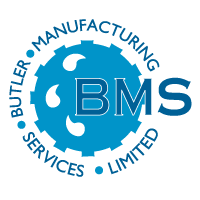Sewage Parameters 7: Chemical Oxygen Demand (COD)
Introduction
In this post, we’ll explore Chemical Oxygen Demand (COD), a parameter that complements Biochemical Oxygen Demand (BOD) in assessing the pollution potential of wastewater. COD measures the amount of oxygen required to chemically oxidise organic matter in a sewage sample, offering insights that are particularly useful in testing industrial and complex wastewaters..
What is COD?
COD quantifies the amount of oxygen needed to chemically oxidise organic compounds in sewage using a strong oxidising agent like Potassium Dichromate.
Difference Between COD and BOD
BOD: Measures biologically oxidisable organic matter.
COD: Measures chemically oxidisable organic matter.
Key Insight:
COD is typically higher than BOD because it includes both biologically and chemically oxidisable compounds, including substances toxic to biological life.
Why is COD Important?
Faster Testing:
COD testing takes approximately 3 hours, compared to 5 days for BOD testing.
Useful for quick feedback on pollution potential.
Industrial Wastewater:
COD captures organic compounds toxic to microorganisms, making it invaluable in assessing industrial effluent.
Pollution Potential:
High COD and BOD levels in effluent can strip oxygen from receiving waters, harming aquatic ecosystems.
Typical COD Levels in Wastewater
Influent Domestic Sewage: COD is generally 600–900 mg/l.
Treated Effluent: COD is reduced to 75–100 mg/l (European norms).
Stringent Standards: Some systems, like the BMS Blivet, can achieve COD levels as low as 10–15 mg/l if required.
In regards to normal domestic effluent e.g. BOD & Suspended Solids (SS) 300 mg/l, which is usual for package sewage treatment systems, COD is not always stated as part of the discharge license. However, COD does have a big advantage over BOD in that the test only takes approximately three hours, as opposed to the five days required for BOD testing. Influent BOD in normal domestic sewage is generally 300 mg/l and it is then treated to at least 25 mg/l (as per European norms) before discharge to minimise pollution potential (oxygen stripping as discussed above).
Most package sewage treatment plants or package wastewater treatment plants such as the BMS Blivet are designed to achieve 25 mg/l of BOD at a minimum but much more stringent BOD levels down to 5 mg/l can be achieved if specified. Furthermore, there is usually a stable ratio between COD/BOD in a stable wastewater flow. BMS have recorded average ratios of 2-3 mg/l COD to 1 mg/l BOD over its 30 years of business. Influent COD in normal domestic sewage is therefore generally 600 - 900 mg/l and it is then treated to at least 75 -100 mg/l before discharge to minimise pollution potential.
Most package sewage treatment systems such as the BMS Blivet are designed to achieved 75 mg/l of COD at a minimum but much stringent more stringent COD levels down to 10-15 mg/l can be achieved if specified based on normal domestic sewage. Over a period of time if BOD/COD are tested from the same effluent samples, it is usually possible to establish a set ratio between the two parameters. Therefore, if quick feedback is required on the pollution potential of sewage effluent, then COD testing is the easiest way with the established ratio figures used to extrapolate the BOD. Indeed, as technology evolves real time monitoring of parameters such as COD, SS, Ammonia, Total Nitrogen and Phosphorus are now possible giving greater or operational control than ever before.
COD and BOD Ratios
Worked Example Calculating BOD:COD Ratio
Outlet Effluent Parameters
BOD 20 mg/l COD 55 mg/l
BOD 15 mg/l COD 49 mg/l
BOD 17 mg/l COD 50 mg/l
Average BOD: 20 mg/l + 15 mg/l + 17 mg/l = 17.3 mg/l Average COD: 55 mg/l + 49 mg/l + 50 mg/l = 53 mg/l
Ratio 53 mg/l ÷ 17.3 mg/l = 1 mg/l BOD : 3.1 mg/l of COD
Using BOD:COD Ratio
Reading of COD of 60 mg/l BOD:COD Ratio as above 1:3.160 mg/l ÷ 3.1 = 19.35 mg/l (expected level of BOD)
Please note the BOD:COD ratio should only be used as a guide. The more data that the ratio is based on, the more accurate it is likely to be.
Important Considerations
Guidance Only: COD ratios are approximations and improve with more data.
Real-Time Monitoring: Advances in technology now allow real-time monitoring of COD, along with SS, Ammonia, Total Nitrogen, and Phosphorus, enabling greater operational control.
About BMS
BMS is a quality manufacturer of package products for wastewater and stormwater treatment:
Established: 1986
Global Reach: Exported to over 50 countries.
Family Business: A third-generation company with deep expertise.
BMS Product Range
BMS provides a wide array of surface water and wastewater treatment products, including:
View the full product catalogue here
Additional Services by BMS
Free Design Service: For sewage treatment, pump stations, and surface water management.
Operation and Maintenance: Full services for existing installations, including repair, advice, and testing.
Free CPD Presentations: Available for sewage treatment and surface water management, delivered at your location.
We would be delighted to discuss any requirements you might have, and we are available to meet you at your convenience. Contact us today.
© Butler Manufacturing Services 2024.

